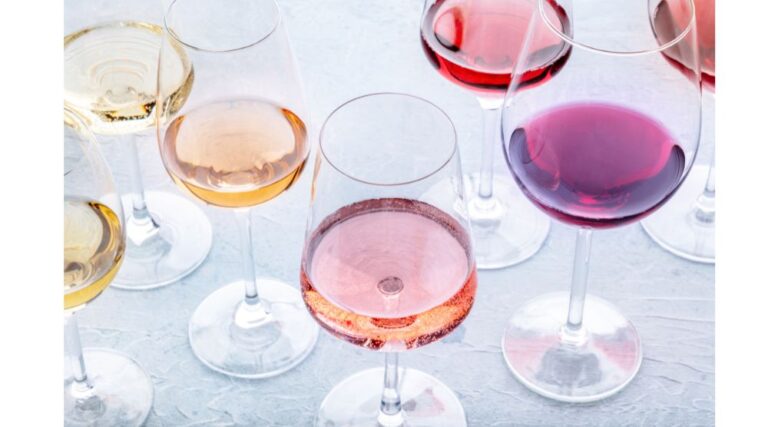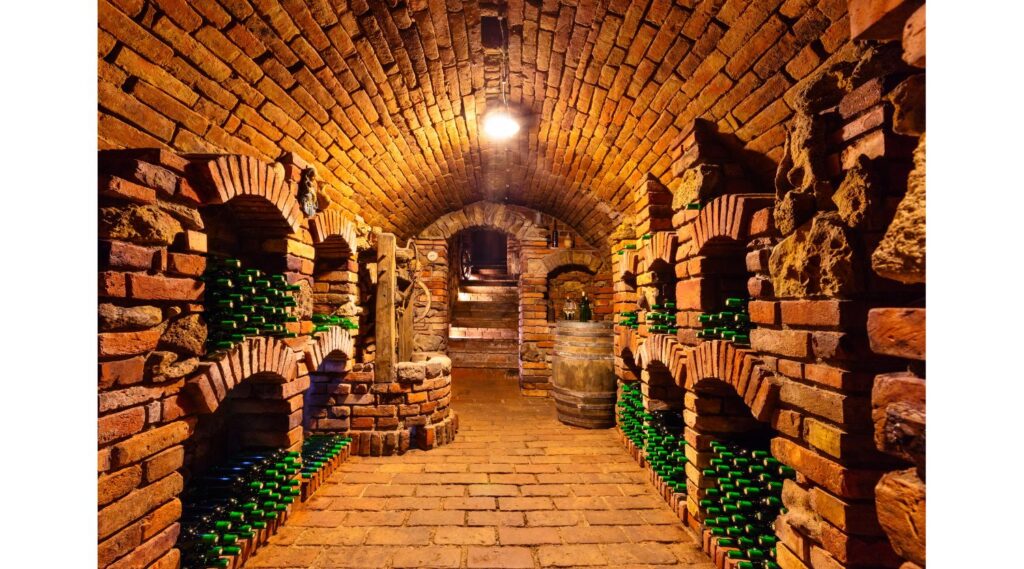Much like people, wine ages – it changes and evolves over time. And just like people, some wines age better than others! What is it about wine that allows for its longevity? And why would we delay the satisfaction of opening any given bottle?
In the 1960s, a team of archaeologists undercovered six Neolithic clay jars with wine residue in the bottom, suggesting the knowledge of aging wine goes back at least 7000 years. The Ancient Greeks added pine resin to their wine to increase the liquid’s longevity. The Romans built catacombs to lay wines down in damp, chill darkness while the French hacked caves out of the mountains and rocks. There were clay wine containers engraved with the date of each vintage discovered in the Tomb of King Tutankhamun in Ancient Egypt.
There are many chemical reactions that alter the flavour, mouthfeel, aroma and even the colour of an older wine – whites will darken in colour, the gripping tannins of a fiery red will soften and integrate and our perception of acidity will vary at different times during the aging process. Anthocyanins, polyphenols and tannins are the compounds that change most radically as a wine ages. During the growing season, grape skins thicken and change colour (a process known as veraison). Colour comes from anthocyanins (pigments) that develop naturally as the grapes are exposed to sunlight. Polyphenols and phenols (phenolics) — aromatic compounds in the skin that contribute to mouth feel and flavour intensity — also begin to form. Tannins develop in the skins, seeds and stems and can be imparted into the wine during a maceration involving any or all of the three.

When a wine is young, colour and pigment are often very dense; so dense that, at times, the edge of the wine will appear water-white as the wine pigment coalesces in the center. Over time, the anthocyanins react with the tannins and acids to form polymers that strip pigments from the wine, becoming insoluble and forming sediment in the bottom of the bottle. During the aging process, grippy tannins decrease in intensity and the sense of viscosity rises. And with the slow introduction of oxygen, flavonoid (aromatic) compounds break down and wonderful tertiary notes begin to take shape.
Young white wines tend to be aromatic and fruit forward. With age, the fruit can lose intensity and can become more “bruised” or oxidative, giving savoury, umami and nutty flavours. And oak flavours that are prominent in youth become more integrated over time as the palate becomes fuller. However, whites aged past their prime start to shed fruit entirely, becoming thin, with predominantly tertiary and oxidative flavours and an evolution to primarily acetic acid as the wine completes its journey to vinegar. Young red wines are typically robust and aromatic and will often have a sensation of tannic grip – tannins are those astringent notes that constrict salivary glands and have a drying sensation in your mouth. Tannins, fruit and acidity form the “balance” of a wine and, when young, red wines are frequently out of balance. Aging can soften the impact of the tannins, integrate them with the fruit and make the overall sensation in the mouth more plush and round. You will often find tertiary notes of forest floor, earth, leather and tobacco – along with savoury and umami elements – in aged reds. As a rule, red wines tend to age better than white wines, but German Rieslings, particularly sweeter styles, can be some of the longest-lived wines on earth.
Almost all wine sees some form of aging before being released for sale. One notable exception would be Beaujolais Nouveau, which is launched in international markets on the 3rd Thursday in November, just weeks after the grapes are first harvested and crushed! Conversely, regions such as Rioja in Spain or Chianti in Tuscany, Italy, have aging designations (eg Crianza, Riserva, Grand Reserva in Spain; Riserva in Italy) which ascribe an elevated status to wines that have been cellared prior to release.
Wineries have a multitude of tactics and processes at their disposal to hasten the maturation process to ensure their wines are enjoyable from Day 1, even if they are not yet at their optimal drinking window. Wines that are made in a completely “INOX” environment (without any oxygen) and without any time in bottle before release would have a very “young” profile – fruity, aromatic and fresh tasting. However, when winemaking is done in the presence of oxygen – in open-top fermenters or with the use of wood, for example – a subtle aging process begins almost immediately and automatically. And we can achieve a small measure of the aging process at home by opening a bottle and letting it “breathe” or by pouring it into a decanter, aerating the liquid and allowing exposure to oxygen.
The next obvious question is: are all wines are made for aging? The answer is a resounding NO! Whites that lack acidity tend to pass their peak rapidly and are best consumed young, as are very light-coloured reds lacking tannin and acid. Instead, look for wines with high acid, good tannic structure and ripe primary fruit such as Napa Cabernet Sauvignon, Sangiovese-based wines such as Brunello di Montalcino, Syrah from the Northern Rhône or Tempranillo from Spain. Sweet and dessert wine with high levels of sugar are also good candidates for cellaring, as are many fortified wines, such as Vin Doux Natural and Port. When in doubt, it is recommended that you drink a wine “too soon” instead of waiting too long. A young wine with plenty of ageability is still enjoyable, while a glass of anything on its last legs can be a bit of a slog to finish.
And be sure to consider these important factors to properly cellar and age any wine:
- Store in a humid area. Lack of humidity dries out corks, allowing oxygen into the bottle and causing evaporation.
- Store your bottles lying down to ensure the bottom of the cork remains in contact with the wine and does not dry out.
- The cellar should be free from direct light, particularly sunlight.
- Maintain a cool and constant temperature.


